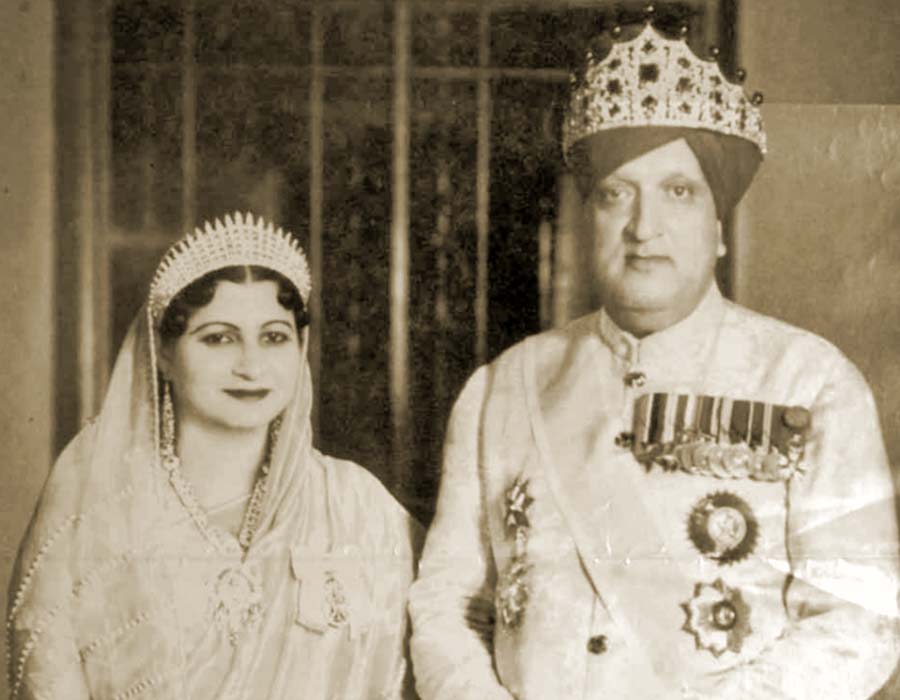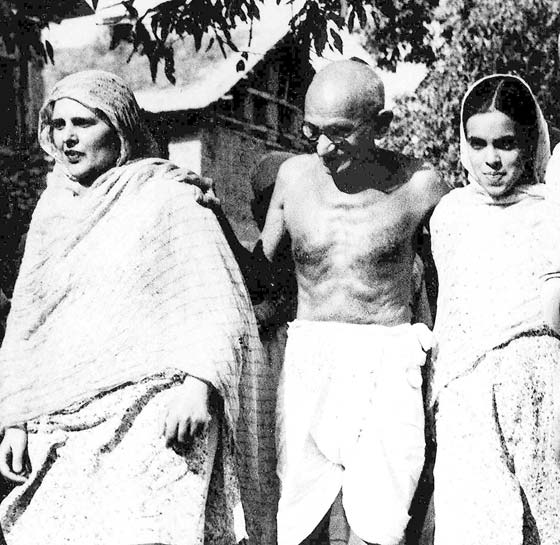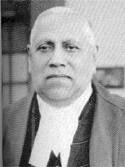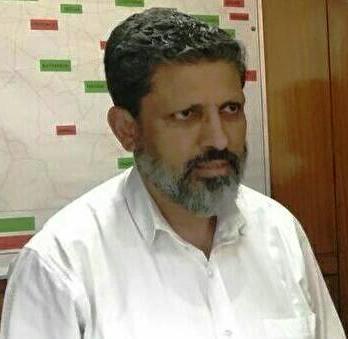by M J Aslam
Acting on the recommendation of Lord Mountbatten, the British Government on June 3, 1947, announced its plan of partition of India into the Dominions of India and Pakistan. The Indian Independence Act, 1947 enacted by the British on July 18, 1947 gave legal recognition to the creation of the two dominions. Under the Act, British suzerainty over the provinces including 584 princely States was to cease on August 15, 1947 and the provinces were given choice to accede to either of the two dominions. But the choice of the rulers to join either dominion was to be determined by their geographical position to the dominion and the predominance of Muslims or Hindus in their populations (see Jinnah: Creator of Pakistan (1954) Hector Bolitho, page 206). In simple terms, “predominantly Hindu provinces were to form the Union of India and the predominantly Muslim provinces were to form Pakistan” (Josef Korbel, Danger in Kashmir, page 44)

Immediately after declaration of Partition Plan, pro-India Hindu Rajas of neighbouring States and Indian National Congress (INC) leaders queued up to visit Maharaja Hari Singh at Srinagar to influence and convince him for acceding to India. At that crucial time, against all ethics of impartiality, a line of “Hindu” monarchs of some erstwhile provinces like Patiala, Kapurthala and Faridkot, and the then Congress President, Acharya Kripalani, paid visits to the Hari Singh.
Patiala, Kapurthala and Faridkot had already declared their intention to accede to India. In 1946, Achariya Kripalani had visited Hari Singh and openly sided with him against Sheikh Abdullah’s Quit Kashmir Movement. The ruler of Patiala was responsible for Muslim subjects massacres in his province.
Fast approaching day of August 15, 1947, made Nehru restive and restless as he wanted to visit Kashmir personally to convince Hari Singh that he had no ill-will towards him and that he wanted to bring reconciliation between him and Sheikh Abdullah as the latter’s support was imperative for bringing Jammu and Kashmir’s accession with India. On July 29, 1947, a meeting was convened at Birla House, Delhi, between Mountbatten, Nehru, Patel and Gandhi wherein it was decided that Gandhi being a “saintly personality” would be sent to Kashmir for the job. (M Y Saraf, Kashmiris Fight for Freedom, (2009) volume II, page 763)
Gandhi Ji was the last but most powerful personality to visit Kashmir at that most crucial time. He was not an ordinary politician visiting Maharaja. He was Mahatma. His advice to Hari Singh could not be ignored by the Maharaja. He “was one of the world’s most ingenious politicians and it was [not] hard to think what could have drawn him, as a saint, to Srinagar at that time”. (Horned Moon: An Account Of A Journey Through Pakistan, Kashmir And Afghanistan (1953), Ian Melville Stephens, page 107)
So, Gandhi Ji set on Kashmir Yatra via Rawalpindi. Bakshi Ghulam Mohammad, whose entry in Kashmir was banned by Hari Singh government for his role in the Quit Kashmir Movement of 1946, was hiding in Rawalpindi. He accompanied Gandhi Ji in Rawalpindi. Gandhi Ji reached Baramulla on August 1, 1947, where he faced huge demonstration of people who rushed towards his car with black flags and handkerchiefs raising pro-Pakistan and anti-Gandhi slogans. Gandhi Ji asked his driver to slow down car and asked the crowd: what they wanted? A demonstrator told Gandhi Ji: “we want Pakistan”. Gandhi Ji replied: “Pakistan to ban gaya hai?” On this, another demonstrator retorted: “Hum Yahan Pakistan Mangta Hai”. Gandhi Ji did not respond to this and instead, his car drove away from the scene. Similar anti-Gandhi Ji and pro-Pakistan demonstrations were faced by him at Sangrama. (see Kashmiris Fight For Freedom (1979) Volume II, M Y Saraf, page 764-765. M Y Saraf has been an eyewitness to all these events)

At Chattabal Srinagar, the followers of Muslim Conference protested Gandhi Ji’ s entry into Kashmir by raising anti-Gandhi, pro-Pakistan and pro-Jinnah slogans. But, on the other hand, NC supporters, following a planning set by their leaders, welcomed Gandhi Ji at Chattabal and Amira Kadal by raising slogans in his favour. It is recorded that Gandhi Ji “positively” responded with “smiles” to MC supporters and their pro-Pak sloganeering. (see Nid-e Haq (2016) by Munshi M Isaaq, page 154)
Gandhi Ji attended at the palace of Maharaja Hari Singh and Maharani Tara Devi at Gupkar Srinagar on August 1, 1947. Maharani came barefooted with milk in a golden cup on a golden tray but Gandhi Ji refused and said: “beti jis raja ki Praja dukhee ho, Gandhi uska doodh nahin Peeta (Gandhi does not drink the milk of a Raja whose subjects are unhappy”. (see Kashmiris Fight For Freedom (1979) Volume Two, M Y Saraf, page 763)
Gandhi Ji stayed at Baghat e Barzalla Kothi of forest lessee Seth Kishori Lal. Ghulam Mohi ud Din Qarra who was hiding to avoid arrest following participation in Quit Kashmir Movement also met Gandhi Ji who paid a visit to Mujahid Manzil (NC headquarters) at Srinagar. He visited Sheikh Mohammad Abdullah’s Soura residence and presented some gifts to Begum Akbar Jehan. (see Nid e Haq ( 2016) M M Isaaq, page 154) Mrs Sheikh Abdullah told Gandhi Ji if Sheikh were not in jail, he would have arranged a grand reception party for him. She offered tea with snacks to Gandhi Ji. (Greater Kashmir, August 4, 2016) He then asked Begum Sahiba to recite a few verses of the Quran which she did. Sheikh Abdullah was himself upholding higher ideals of Mahatma Gandhi’s India in Kashmir. (Blazing Chinar (2016) pages 148, 308)
Gandhi Ji, before returning to Jammu on August 3, 1947, had discussions with Hari Singh in his palace at Hari Niwas, Gupkar, Srinagar. What exactly transpired between the two is not precisely known, (see The Times, London, October 25, 1947) but the fact that India had been taking lively interest in the subject of Kashmir and that Hari Singh was “much influenced by representations made by Gandhi who visited Kashmir”, cannot be denied. (Ibid quoted with approval by Josef Korbel in Danger in Kashmir, page 59)
The veteran journalist, Ved Bhasin, has confirmed it in these words: “In this backdrop, Gandhi Ji visited Srinagar on 1st August 1947 and met the Maharaja. Though Gandhi declared that his mission was not political and he was only fulfilling an old promise to the Maharaja to visit Kashmir, there were clear indications that he had advised him to join the Indian Union. Gandhi Ji returned to New Delhi via Jammu where he arrived on August 3.” (see Experiences of Partition: Jammu 1947’, paper presented at Jammu University in 2003 by Ved Bhasin, cited by Saeed Naqvi in Being the Other: Muslim in India (2016), page 176)
Later developments following Gandhi Ji’s visit are clear indicators of the influence he had exercised on Maharaja Hari Singh. They were as below:

Firstly, Pandit Prem Chand Kak, a Kashmiri Prime Minister of Maharaja Hari Singh, who had signed the Standstill Agreement with Pakistan and who had prevented Nehru in May 1946 from entering JK borders and got him detained at Lakhanpur border, was replaced by a Kangra-man Janak Singh (10 August to 14 October 1947) who was Maharaja’s close kinsman and who had also served as his Army Minister. He was later replaced by Mehr Chand Mahajan (15 October-5 March 1948), who was the most significant Indian Congress representative in Radcliffe Commission, and who had openly sided with India and was for the State’s accession with India. (see Josef Korbel, Danger in Kashmir, page 60)
Secondly, the British officers were dismissed from the Kashmir police and Dogra army, including the Chief of the General Staff and the Inspector General of Police. (Ibid)
Thirdly, the arrest warrants of Bakshi and other NC leaders were cancelled. Bakshi, Sadiq and Karra were avoiding arrest and since his days of absconding arrest, Bakshi had become very close to Sardar Patel. After Gandhi Ji’s visit, Bakshi was openly praising Sardar Patel. (Ibid, Nid e Haq, page 155: Note: As Sheikh Abdullah was in jail at that time, Bakshi was the acting President of NC)
Fourthly, following Gandhi Ji’s Kashmir Yatra, Nehru started manoeuvring possibilities of getting Sheikh Abdullah released from prison. At that time, Sheikh Abdullah was serving a three-year term in jail for sedition charges since May 1946, while his closest associates were avoiding arrests which were cancelled by the Dogra regime after Gandhi Ji’s visit to Hari Singh. Sheikh Abdullah was, thus, released from jail on September 29, 1947, after tendering an unconditional apology and offering some Ashrafiyan (gold coins) to Hari Singh as was customary. (Sardar Patel’s papers; Nid e Haq) Sheikh Abdullah’s release was orchestrated by Nehru is proven beyond doubt by several recorded and documented historical facts. The facts are as under:
a) The letter dated September 27, 1947, addressed by Nehru to Patel amply proves the contention. It reads as: “there is no course open to Maharaja than to release Sheikh Abdullah and other N C leaders to make a friendly approach to them, seek their co-operation and make them believe that this is really meant, and then to declare adhesion to the union of India.” (Cited in Kashmir Issue, A M Mattu, (2002) page 46)
b) Public speeches and addresses of Sheikh Abdullah right from the day of his release were openly against two nation theory and Pakistan and pro-India. Tribal’s entered Kashmir on October 22, 1947, to mention.
c) Sheikh Abdullah was appointed as Prime Minister of Jammu and Kashmir succeeding Mehar Chand Mahajan on March 30, 1948, after his “famous” speech in UN General Assembly on February 5, 1948. Sheikh Abdullah, in express terms, has admitted how he persuaded Nehru and Patel to make him Prime Minister in place of Mehar Chand Mahajan as he had told them that “diarchal administration in Kashmir” would prove disastrous for India. Sheikh writes proudly that he was the “first Muslim” Prime Minister under the royal dynasty of Maharaja Hari Singh. (Blazing Chinar (2016) pages 320-322; Birth of a Tragedy-Kashmir, Aliaster Lamb, page 53)

d) Stanley Wolpert records that Nehru and Patel thought that as Prime Minister of Kashmir, Sheikh Abdullah would be able to convince his fellow Muslim majority in the Vale to remain happy within India’s union, rather than so anxious to join their Muslim brothers in Pakistan. (Shameful Flight, Page 184)
e) In a letter addressed by Nehru to Sheikh Abdullah, the role that was cast for Sheikh in facilitating accession and bringing Indian troops to Srinagar together with Nehru is plainly acknowledged by Sheikh Abdullah in his work, however, with a friendly caution from Nehru to be observed: “…..There is going to be a rough time for us in the future.” (Blazing Chinar (2016) on page 293)
(M J Aslam is author, academician, story-teller and freelance columnist. He is presently AVP in JK Bank. Ideas expressed in this article are personal.)















